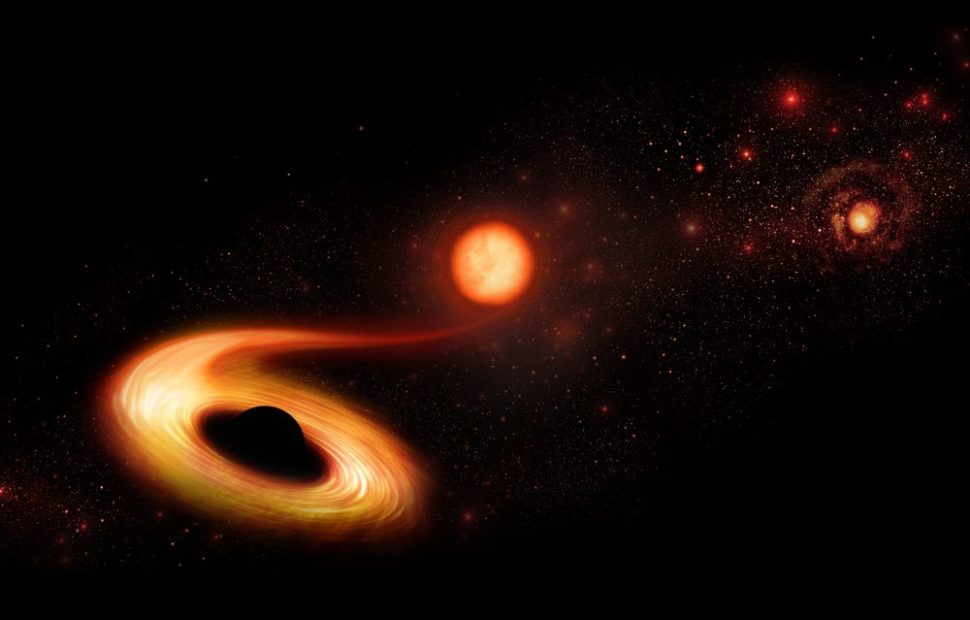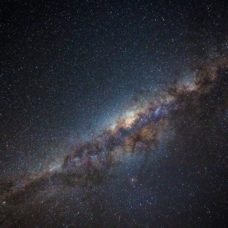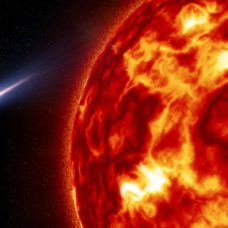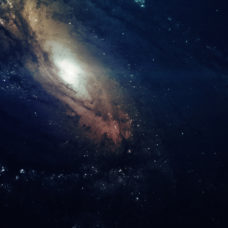Scientists discovered an ancient, ultramassive black hole that is brighter than an entire galaxy. To sustain its fast-growing size, this black hole feeds on a Sun-sized star every two days.
In the 1970s, astronomers discovered the supermassive black hole Sagittarius A* at the Milky Way’s center, around 26,000 light-years away from Earth.
Scientists have since found evidence of the existence of thousands of other black holes of different sizes sitting in the galaxy’s center or roaming around its outskirts.
Sagittarius A*, with its 44-million-kilometer diameter, and 4-million solar masses, is undoubtedly a supermassive black hole.
However, when compared to this newly discovered black hole, our own Sagittarius A* looks like a cosmological children’s toy.
Fast-Growing Ultramassive Black Hole With A Voracious Appetite
A team of astronomers at the Australian National University recently announced their discovery of the “fastest-growing black hole in space”.
To discover this back hole, ANU researchers used the SkyMapper telescope (at the ANU Siding Spring Observatory) and later confirmed their findings using data courtesy of the Gaia mission, the biggest galactic cartography endeavor to date.
Read More: The ESA’s Gaia Mission is Revolutionizing Astronomy
To follow this black hole’s evolution, ANU had to go far back in cosmological history to when the universe was about 2 billion years old.
12 billion years ago, the yet-unnamed black hole was already of gargantuan dimensions, with an estimated size of about 20 billion suns.
Astronomers think that this black hole formed very early on when the universe was still an infant. Since then, it grew at a rate of one-percent growth every one-million years.
To sustain its expansion, this black hole swallows up stars like our Sun in just two day’s time.
It’s so massive that if it was occupying Sagittarius A*’s location in the galaxy’s center, it would appear ten-times brighter than a full moon to the naked eye.
In fact, it would be so bright that it would outshine all the stars in the night sky.
The stellar matter that gets sucked into this black hole supposedly emits UV and X-ray radiation jets that could shatter Earth’s magnetic shield and wipe out all life forms on the planet’s surface.
As the black hole rips a star apart, it emits intense energy jets, a.k.a. quasars (which are believed to be the brightest objects in the Universe) that help scientists infer the mass, the size, and other useful data about the black hole.
Ancient Ultramassive Black Holes as Galactic Beacons
Astronomers think the entire class of ultramassive black holes formed early on, as we mentioned, when the universe was still in its infancy.
Surprisingly, as massive as this black hole, its detectable magnetic field is much weaker for a celestial object of this size, which might explain its late discovery.
They also think that with coming advancements in Earth-based observatories and measurements tools use, these black holes could serve as beacons to chart and track the formation and growth of galaxies.
The size of this newly detected black hole puts it on par with the top largest black holes discovered to date.
In a recent related news story, researchers from the University of Florida and the University of Texas at San Antonio reported their discovery of a black hole (about 10-15 solar masses) that also showed weak magnetic field than expected.



















Comments (0)
Most Recent